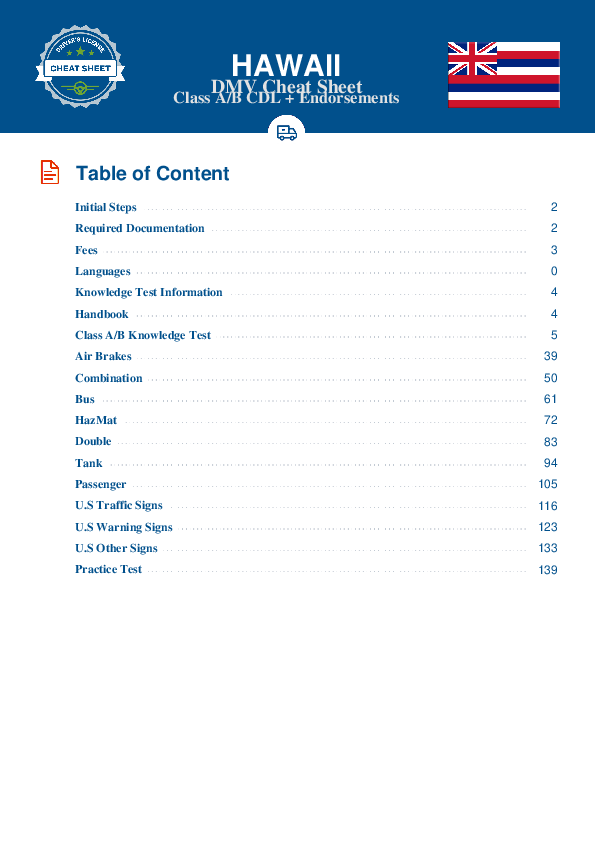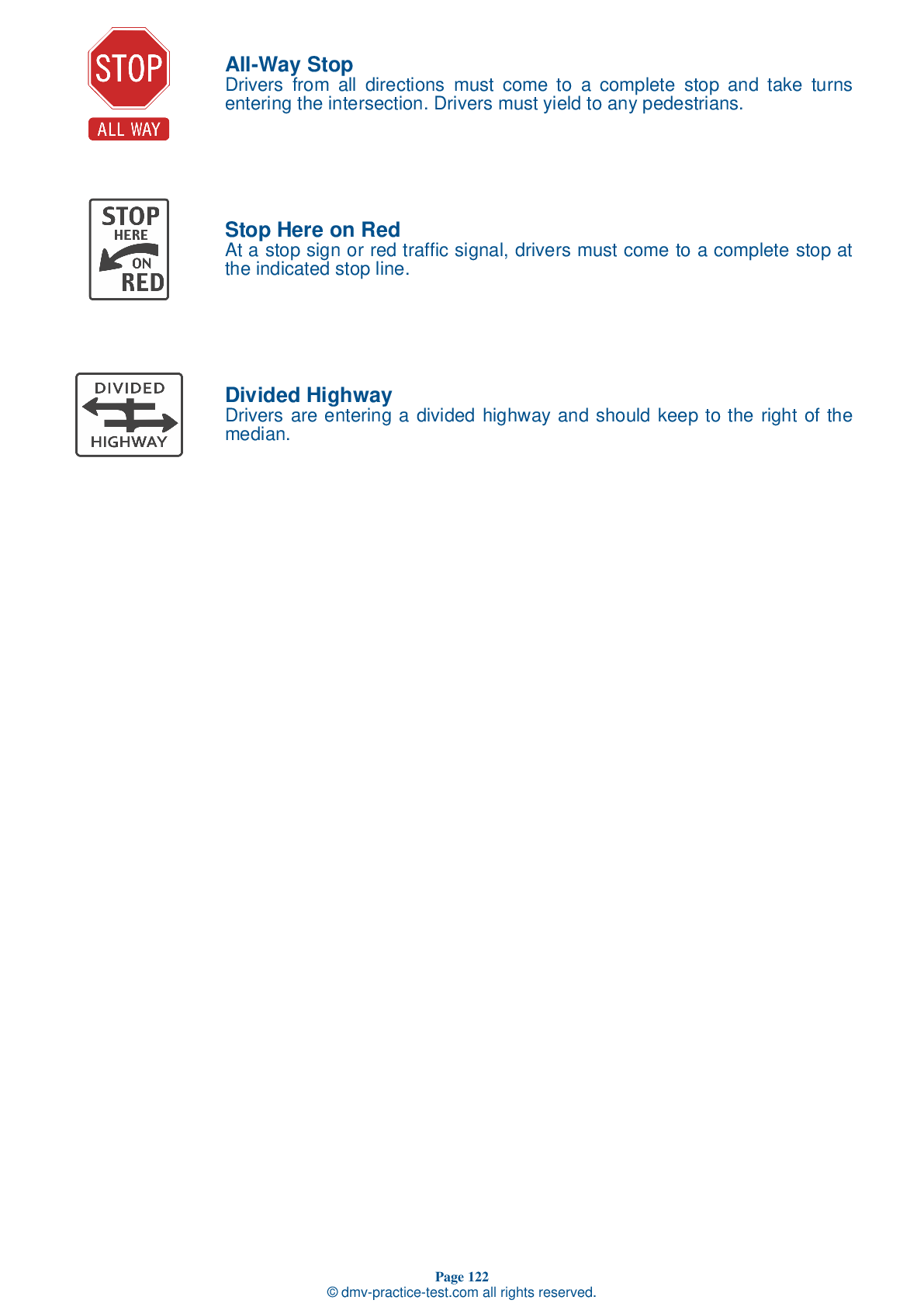Double Triple Test | Hawaii 2025 #1
Train for FREE with our Hawaii CDL double triple practice test online. The official exam test consists of several obligatory parts, with all of them checking your knowledge of different blocks of road rules. If you need to obtain a HI CDL double triple license in 2025, practice as much as possible. Free sample tests published on our website will help you check and improve your knowledge and boost your grades. Please bear in mind that DMV requirements may vary from state to state.
1 . While driving, if you notice anything that affects safety or could lead to mechanical problems, you should:
After finishing a day of driving, you may have to complete a written report on the condition of your vehicle. Be sure to mention anything that could affect safety or lead to mechanical breakdown.
2 . Slow down and be extra careful:
Slow down and be especially careful when driving in and around work zones, in places where the pavement drops off sharply at the edge of the road, when foreign objects are present on the road, and on freeway on- and off-ramps.
3 . The leakage rate for a single vehicle with air brakes should be no more than ____ in one minute during a static leakage test.
When performing a static leakage test on a single vehicle with air brakes, the leakage rate should be no more than 2 psi in a minute. If the air leaks from the air brake system at a quicker rate, the vehicle should not be driven because something likely needs to be repaired.
4 . Which of the following is the best advice for driving in fog?
Driving in fog is always dangerous and should be avoided entirely if at all possible. If you must drive in fog, be sure to turn on your low beam headlights and fog lights, even during the daytime.
5 . If driving so slowly that you could impede other drivers, you should:
If you must drive so slowly that you will impede the flow of traffic, you should turn on your four-way flashers to alert drivers behind you (as long as local laws allow the use of flashers).
6 . When braking with ABS, you should:
When operating a vehicle with an Anti-Lock Braking System (ABS), you should apply your brakes in the same manner as you would if operating a vehicle without ABS.
7 . If one-fourth of the leaves in a leaf spring are missing when a vehicle is inspected:
When inspecting a vehicle's suspension, you should look for broken or missing leaves in the leaf springs. Any defect of this kind is dangerous. If one-fourth or more of the leaves are missing from any leaf spring, the vehicle must be put out-of-service.
See the exact questions that will be on the 2025 Hawaii DMV exam.
99.2% of people who use the cheat sheet pass the FIRST TIME
Lillian MCcranie explains how our CDL study guide was helpful in passing the exam and recommends it to everyone.
Cameron tells us how he purchased the CDL exam, and found it to be a useful tool which helped him pass the exam and find a job.



